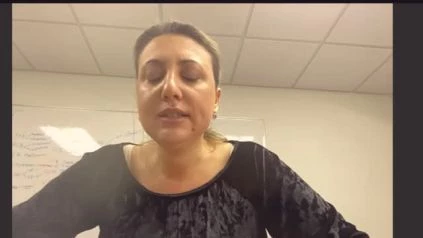Francesca Vinchi, Ph.D. from the New York Blood Center speaks about “Breaking up†in Sickle Cell Anemia: Impacting Disease Pathophysiology and Transfusion Support.
SummaryÂ
Increasing evidence suggests that intravascular hemolysis, estimated to account for one-third of sickle cell anemia (SCA) hemolysis, plays a key role in the pathophysiology of SCA. The mechanism underlying the pathological impact of hemolysis involves the pro-oxidant and cytotoxic effects of breakdown products, namely hemoglobin, and its oxidized form heme, on the vascular endothelium through the delivery of microparticles of red cells or directly by signaling Toll-like receptor 4 (TLR4) as well as the effect of heme species on key types of immune cells that can further magnify inflammatory cells. It has not been systematically investigated if transfusions can intersect with the mechanisms, but the prediction is that tipping this immune response into an anti-inflammatory state could be crucial in the treatment and management of SCA complications. In this session, we will explore the sensing and response pathways of cellular heme in normal and hemolytic disorders, including SCA, identify recent research on the effect of transfusions on these heme response pathways in SCA, and address possible therapies that can be coupled with transfusions as a mechanism for improving and promoting transfusion management for this patient population.
Objectives for Learning
Examining the role of hemolysis in the pathophysiology of sickle cells
Describe the prooxidant and cytotoxic effects of breakdown products from hemolysis
Discuss the effects of transfusions in sickle cell anemia on heme response pathways in innate immune cells and the possible use of anti-hemolytic therapies to improve transfusion management

